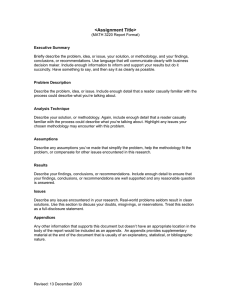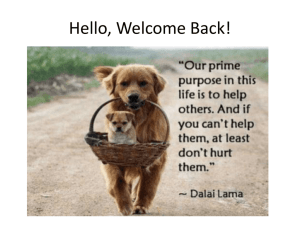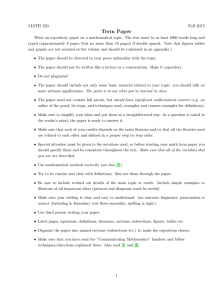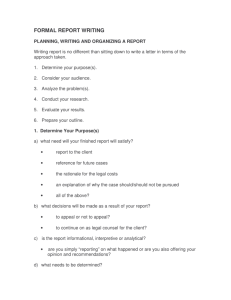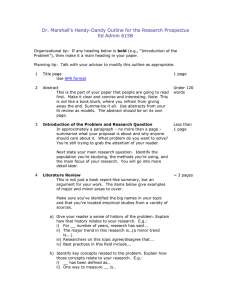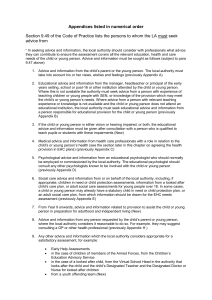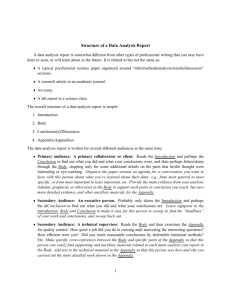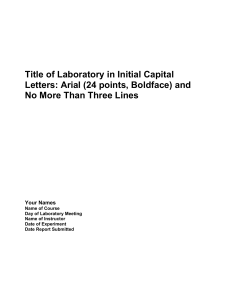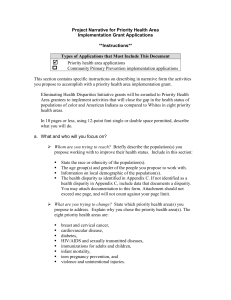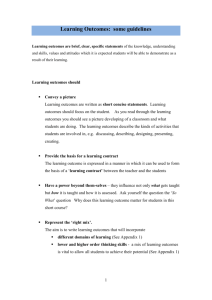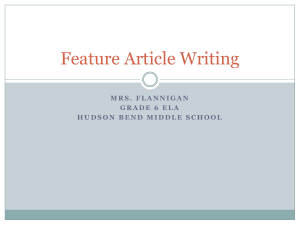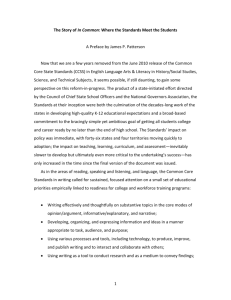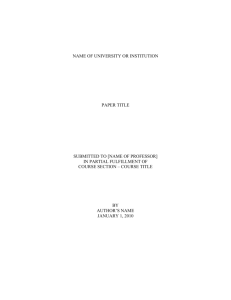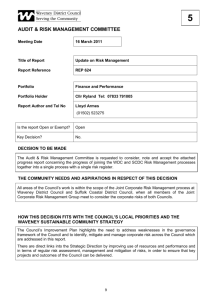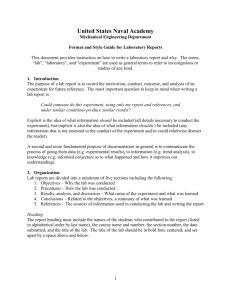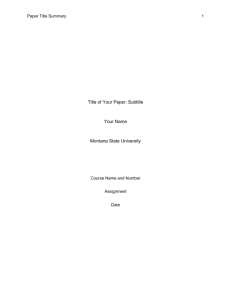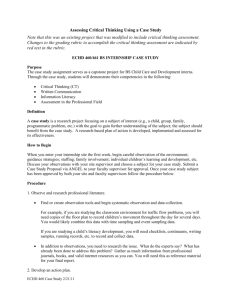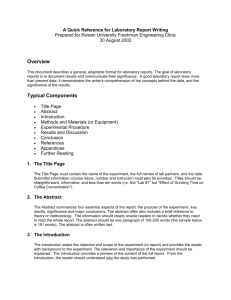The IMRaD Report
advertisement
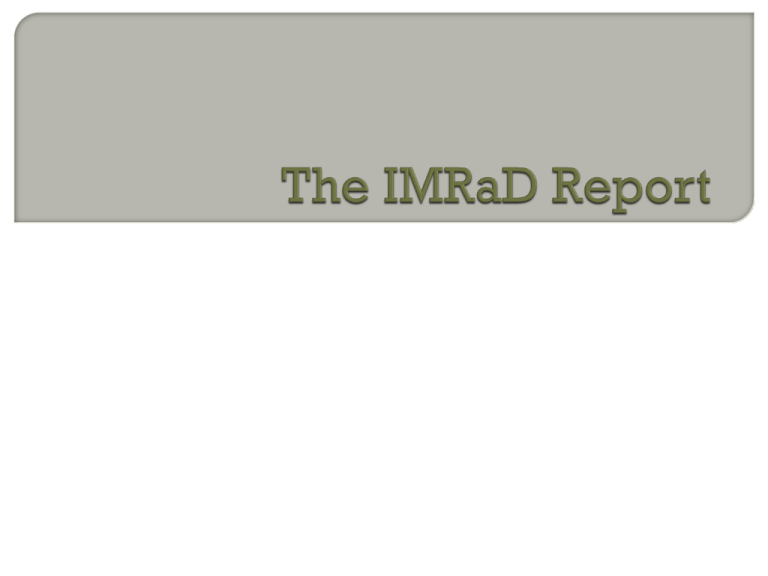
Introduction Methods Results Discussion What is your research question? • This might be phrased as an actual question or simply as a statement of what this report is about. What did you find out? “The purpose of the introduction should be to supply sufficient background information to allow the reader to understand and evaluate the results of the present study without needing to refer to previous studies on the topic.” (Todorovic) What information does the reader need to understand your research? • Is there something specific about the demographic you are studying that your reader should know? • Is there something about the research site that the reader needs to know? • Is there something about the particular aspect of writing that your reader should know? Why have you undertaken this research? • What is your interest in this research topic? • What possible biases might you have as a researcher? • Do you have a personal stake in this research? *These are questions that you would normally not answer in an IMRaD report, though you might reveal if you were receiving funding for this research from an outside party. However, I am asking you to consider them for this project because, as we talked about last class, “writing” can be a very personal, messy thing. Remember the formula we used for introductions with the last paper – forget it. The intro will not have a catchy opening sentence, a shocking statistic, or an anecdote. Instead, you will start stating background information. How did you collect, measure, and analyze the data? Use subheading to enable skimming Common subheadings include: • Participants – number, criteria for selecting, relevant demographic information • Research Sample – what you collected and criteria • Procedures – how did you go about collecting the data? Observations, interviews, surveys, etc. • Analysis – how was the data analyzed? Include formulas, statistical procedures, and equations, etc. Subheadings I’m expecting you to have: • Participants • Procedures Observations – How did you go about observing? How did you keep records? Under what circumstances did you do your observations? Interviews – How did you record the interviews? How did you develop your interview questions? Surveys – How did you distribute your survey? How was the data counted? What did you find out? Use tables, charts, graphs, and words to focus your readers attention on the most important trends or conclusions. We will talk more about creating charts, tables, and graphs out of data on Tuesday. What does it all mean? Some reports might label this section as “Conclusion,” “Implications,” or “Recommendations.” Some reports might have both a “Discussion” and a “Conclusion” or “Recommendation” section. Generally this section will explain how these finding support, contradict, or further our discussion of this topic. Begin by summarizing the main points of the Results section – emphasize the bottom line. Discussion flaws and limitations in your study and suggest ways the study might be done better. What recommendation would you make to me as a writing teacher based on your findings? An Appendix is a document attached to the end of a report or article that contains information that had some bearing on the research itself. • Sondra Perl’s article included an appendix with writing samples from Tony and an example of a “style sheet” in which she had recorded what was happening at each point in time in the composing process. If you have only one document or one type of document to include, you would label it as “Appendix” with a subheading titling the document (“Survey Questions”) If you have more than one appendix, you refer to them as Appendix A, Appendix B, etc. I do want you to include any survey questions, interview questions, or writing samples that you might reference in your report.
